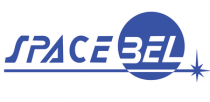Automotive Telematics Systems Revenues to Reach $6.7 Billion Globally in 2023, Nearly Tripled from 2016, IHS Markit Says
Global revenue from automotive telematics systems will grow at a compound annual growth rate (CAGR) of nearly 17 percent to more than $6.7 billion by the end of 2023, according to new research from business information provider IHS Markit (NASDAQ: INFO).
These automotive telematics forecasts from IHS Markit are driven by continued innovation in vehicle connectivity and safety technologies, and demonstrate a wide variety of viewpoints from consumers across leading global markets. The data represents production of factory-installed telematics systems, including embedded, consumer electronics (CE) and hybrid telematics.
The IHS Markit research estimates that more than 33 million light vehicles equipped with some form of telematics were produced in 2016 globally. It is expected that production of such light vehicles will grow at a CAGR of 11 percent to reach over 66 million units in 2023. Approximately 70 percent of new light vehicles produced in 2023 will be equipped with some form of OEM telematics systems.
CE telematics continue to lead the global automotive telematics market since it is a relatively low-cost solution and available in a wide range of vehicles. It currently makes up nearly half of the market, the new research says. The rapid growth of the smartphone market has had a significant impact on the telematics market, as many OEMs currently offer smartphone integration via Apple CarPlay and Google Android Auto or other smartphone projection-mode solutions as part of their connected car offerings.
Meanwhile, embedded telematics solutions are often used for safety and security features of telematics services such as emergency calling, roadside assistance, stolen vehicle tracking, over-the-air updates and more. The demand of embedded telematics control units (TCUs) will increase, especially with the European eCall mandate that goes into effect in 2018. Then, the total revenue of embedded TCUs is expected to grow at a CAGR of 15 percent by 2023, IHS Markit says.
Hybrid telematics solutions, using both an embedded TCU and a connected CE device to provide a two-way data connection to the car, will have the strongest growth among the three type of telematics systems during the forecast period, according to IHS Markit forecasts. The production of hybrid telematics systems will surpass the production of other types of telematics systems in 2018. It will continue to lead the market throughout the forecast period.
“A large portion of vehicles already feature multiple connections especially in the luxury segment,” said Anna Buettner, manager for automotive infotainment at IHS Markit. “This trend is expected to spread to other lower segments during the next few years, as strong market demand will bring connectivity to vehicles and regions that traditionally lagged behind.”
While telematics has existed in the automotive industry for more than 20 years, growth is still expected for the next decade, whether due to mandates or the consumers’ desire to be connected even while driving. Telematics systems based on wireless communications have benefited consumers and OEMs, by saving lives and managing recalls, to name only a few, and will be increasingly important in all regions.
“OEMs need to ensure that these offering are affordable for consumers and easy to use. Autonomous driving applications and the new urban mobility movement will further push demand upward,” Buettner said. “Consumers have an expectation for staying connected while on the go and that is also true for the in-vehicle experience.”
Telematics systems are a major factor in changing the automobile from a collection of analog control systems to a fully networked and connected digital car, where software-defined functionality can be remotely changed, corrected and updated. Telematics systems also add connectivity-based applications that make the average vehicle safer and more fuel efficient, as well as help to correct common driver errors. As a result, telematics can bring many benefits to various parties including consumers, auto manufacturers, dealers, communities and more.
In addition, as the telematics market grows, the automotive industry is facing new challenges and issues that need to be solved. In one example, cybersecurity is one of the most important issues in the connected car era. Since the role of telematics increases in importance as connectivity becomes essential for V2X and autonomous driving cars in the future, the automotive industry is working to find and develop solutions to protect its telematics systems from cyber-attacks in the future, and must continue these efforts as technologies continue to advance.
About IHS Markit (www.ihsmarkit.com)
IHS Markit (Nasdaq: INFO) is the automotive industry’s leading source for market-wide insight, expertise and advanced planning solutions. With a reputation of enabling better decisions and better results for nearly a century, the world’s leading OEMs, suppliers and their transportation partners rely on IHS Markit to power growth, improve efficiency and drive a sustainable competitive advantage.
Automotive offerings and expertise at IHS Markit span every major market and, the entire automotive value chain -- from product planning to marketing, sales and the aftermarket. Headquartered in London, the automotive team is part of the IHS Markit information and analytics powerhouse that includes 12,300 plus colleagues in 150 countries, covering energy, chemical, aerospace and defense, maritime, financial, technology, media and telecommunications. For additional information, please visit www.ihsmarkit.com or email automotive@ihsmarkit.com.
IHS Markit is a registered trademark of IHS Markit Ltd and/or its affiliates. All other company and product names may be trademarks of their respective owners © 2017 IHS Markit Ltd. All rights reserved.
View source version on businesswire.com: http://www.businesswire.com/news/home/20171012005975/en/





